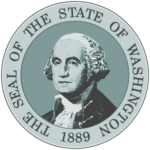Pillar overview
Different teacher academies call this portion of the program different things — practicum, field experience, internship — while meaning the same thing: a chance for high school students to gain hands-on teaching experience in the classroom.
Programs may differ on how and when they phase students into the mentors’ classrooms, and what the intern does in the classroom. Regardless of when they begin, students agree that classroom experiences are a primary motivator for long-term engagement in a teacher academy program. They find great benefit from the annual 60-80 hours of hands-on learning with younger students.
Each RWT program designs its field experience based on what is best for their students and district. While weekly internships require RWT program leaders to recruit mentor teachers in their district willing to host teacher academy students, and we have many tools to help you.
Classroom practices
- Create more experiences and opportunities in the classroom that allow students to be genuine inquirers
- Pay attention to how students interact with other students and mentors in group-work activities
- Help students work effectively as part of a team, both horizontal and vertical
- Create more opportunities to discuss the ethical issues that arise in the teaching profession
- Model empathy, compassion, and respect for others in our classrooms and around the school

